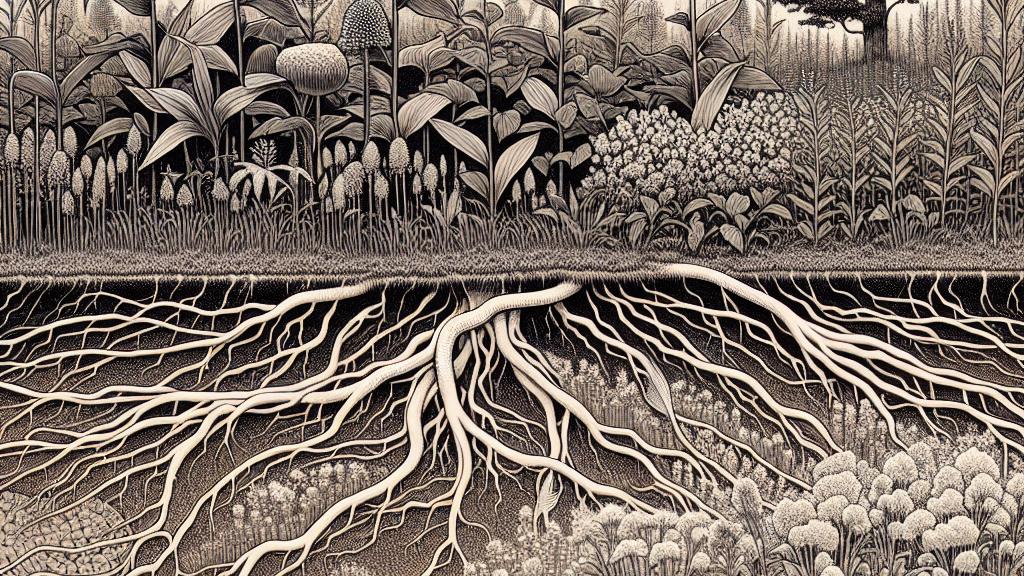The Impact of Invasive Plants on Soil Microbial Diversity
Overview
- Invasive plants radically reshape soil microbial communities across the U.S., affecting ecosystem health.
- They result in significant biodiversity loss, creating more homogeneous ecosystems.
- A thorough understanding of these impacts is crucial for effective restoration and management strategies.

Invasive Species in the U.S.
In the diverse ecosystems of the United States, invasive plants such as Japanese knotweed, garlic mustard, and the notorious giant hogweed are not only spreading rapidly; they are also fundamentally transforming our natural landscapes. These aggressive species have demonstrated an uncanny ability to outpace native flora, often flourishing in environments where their counterparts struggle. For instance, the extensive root systems of these invaders can blanket native species, effectively smothering them and leading to a decline in biological diversity. This process, referred to as biotic homogenization, means that different areas can start to exhibit remarkably similar soil ecosystems, thereby underlining the urgent need to address the expanding reach of these non-native plants.
Effects on Soil Microbial Communities
Emerging research from Rice University has painted a concerning picture of how invasive plants rearrange the microbial communities in our soil. It has been found that these invaders contribute to significant microbial homogeneity across various geographical regions. As they proliferate, they dominate nutrient availability, ultimately disrupting intricate relationships among soil microbes that are critical for nutrient cycling and soil health. Consider the rapid growth of buckthorn; it not only outcompetes native species but also alters the microbial landscape, leading to a notable decline in diversity. Such changes can enthusiastically ripple through the ecosystem, impacting everything from plant health to water retention and wildlife habitat, showcasing the pivotal role that microbial diversity plays in sustaining ecological balance.
Management and Restoration Considerations
Given the far-reaching implications of invasive plants on soil microbial diversity, developing innovative management strategies is more important than ever. Effective invasion management should integrate methods that address not only the removal of these invasive species but also the revitalization of native plant populations and their associated microbial communities. For example, using a combination of mechanical removal and natural re-vegetation techniques has proven effective in restoring habitats. Land managers may also consider reintroducing native plants that bolster soil health, thereby reinforcing ecosystem resilience. In conclusion, acknowledging and addressing the transformative effects of invasive plants on soil microbes will equip conservationists, ecologists, and policymakers with the insights needed to implement impactful restoration practices, ultimately ensuring the health and stability of our ecosystems for generations to come.

Loading...